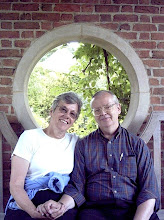Fear is the main source of superstition, and one of the main sources of cruelty. To conquer fear is the beginning of wisdom.
— Bertrand Russell, in John-Roger & Peter McWilliams, Do It!: Let's Get Off Our Buts, p. 34.
Our greatest pretenses are built up not to hide the evil and the ugly in us, but our emptiness. The hardest thing to hide is something that is not there.
— Eric Hoffer, in Ibid., p. 34.
It is one of the great jokes of existence. When people take the courage to journey into the center of their fear, they find — nothing. It was only many layers of fear, being afraid of itself.
This realization is either tragic or comic. When people experience this, they are often seen laughing and crying simultaneously — and the unenlightened nearby may fear that they have gone mad.
— John-Roger & Peter McWilliams, Do It!: Let's Get Off Our Buts, p. 35.
Perfections of means and confusion of goals seem — in my opinion — to characterize our age.
— Albert Einstein, in Ibid., p. 146.
Most people let their methods decide their intentions. This is a fundamental mistake in manifestation. Those who look at what they already have before selecting what they want are involved in making do, not doing.
The reason many people feel bored and unfulfilled is that they spend their lives shuffling and reshuffling the methods they already have. This can be like rearranging deck chairs on the Titanic — no matter how well it's done, the result is the same. As someone said, "If you do what you've always done, you'll get what you've always gotten."
When choosing a dream, look to your heart, not to your "reality." That's why it's called a dream. Make that dream your intention. Commit to it. Act upon that commitment. The methods to fulfill that dream will appear.
— John-Roger & Peter McWilliams, Do It!: Let's Get Off Our Buts, p. 147.
Theoretical physicist Henry Margenau and psychologist Lawrence LeShan search together for a common view of physical reality and beyond. In their book Einstein's Space and Van Gogh's Sky, they write of the artist's task in a manner Blake would share.
"Art introduces to us new ways of perceiving and reaction to the world. The artist knows that there is no one correct way to perceive. He seeks new and different views of reality, and when he is successful in his search, the culture learns to perceive with his new view. When Picasso was told that his portrait of Gertrude Stein did not look like her, he replied, 'Don't worry. It will.' Similarly, if Ibsen had been told that women did not behave like his heroines, he might well have replied, 'Don't worry. They will.' And seventy-five years later he would have been proven to be correct."
Artist Paul Klee wrote: "The artist does not reproduce the visible; rather he makes things visible."
The artist makes things visible. The active creative imagination releases a person from the "cavern'd" view and from its accompanying lowest common denominator "ratio" world. Blake knew that the function of true religion and true art is to cause a shift in perception to take place, remarkably expanding one's capacity to enjoy a richer quality of experience. He wrote about what he sees in the morning.
"What," it will be questioned, "When the Sun rises do you not see a round Disk of fire somewhat like a guinea?" O no no, I see an Innumerable company of the Heavenly host crying "Holy Holy Holy is the Lord God Almighty."
This is not simply a matter of concern to an intellectual, a monastic, or an aesthete. It is a matter of the broadest import, touching upon the range of aliveness possible to a person, even a whole culture...
— Roy D. Phillips, "Blake and Freedom," from "Freedom's Roots," Chrysalis, Volume III, Issue 2, pp. 156-157.
Subscribe to:
Post Comments (Atom)

No comments:
Post a Comment